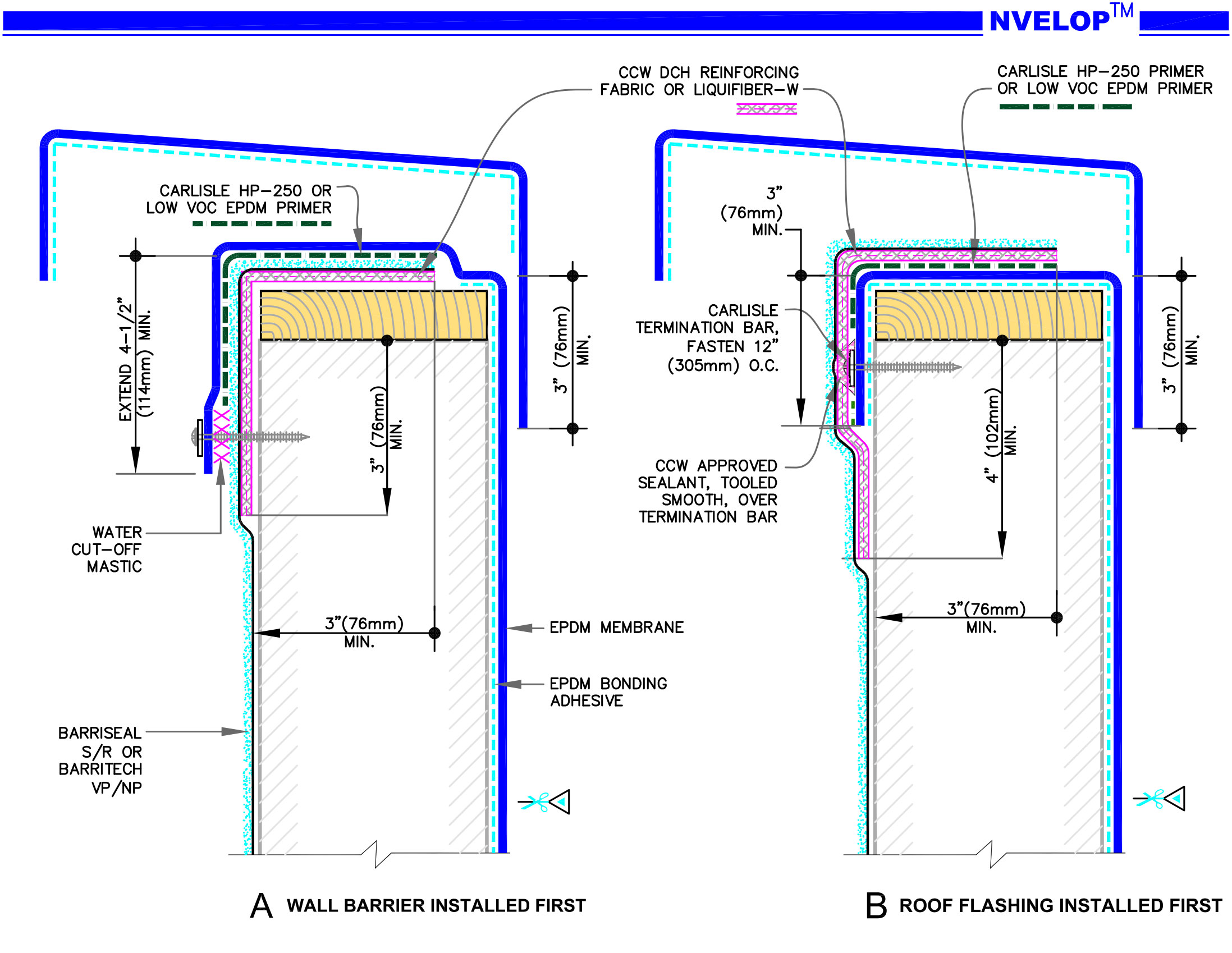
How to Apply EPDM Pressure-Sensitive Curb Wrap
Installation Techniques
- Measure curb perimeter and add 3″ (7.62 cm) for the overlap.
- Measure curb height.
- After cutting, place the Peel &Stick Curb Flashing on a flat surface with the tape side up and the clear poly intact.
- Mark area of flashing to receive Bonding Adhesive using curb height and perimeter measurements and allowing for overlap.
- Lay out slip sheets on each side of curb.
- Apply Bonding Adhesive to flashing and curb and allow to dry.
- Wrap curb with the tape area folded upwards and clear poly still in place.
- Clean deck membrane with Weathered Membrane Cleaner.
- Work flashing down curb until the vertical sections of the curb are covered.
- Apply primer to the splice area on the deck membrane.
- Cut flashing at each corner of the curb and allow flanges to fall into place. Round all cut corners.
- Cut excess material at a 45-degree angle down vertical overlap.
- Press flashing into angle change as tightly as possible and remove clear poly while pressing the tape onto deck membrane toward the splice edge.
- Roll splice with hand roller.
- Complete flanges on remaining curb sections.
- Apply primer to vertical overlap area.
- Measure curb height and cut a piece of 3” (7.62 cm) Peel & Stick Seam Tape to match the height of the curb.
- For ease of cutting, apply excess clear poly to tape.
- Apply tape to vertical corner of curb.
- Mark flashing to ensure 1/8″ -1/2″ (3.175mm -12.7 mm) tape exposure and cut off excess.
- Remove clear poly and fold flashing onto tape.
- Roll overlap area with hand roller.
- Flash the corners of the curb per WBRC-15 details.
In cold temperatures, use of a heat gun is required when working with all uncured EPDM flashings.
See all Membranes
WeatherBond offers four types of membranes for single-ply roofing, all perfect for commercial and residential low-slope applications.
Learn MoreAbout WeatherBond
WeatherBond is a leading supplier of single-ply roofing systems. These include EPDM, TPO, PVC and a full line of accessories for each membrane.
Learn More
